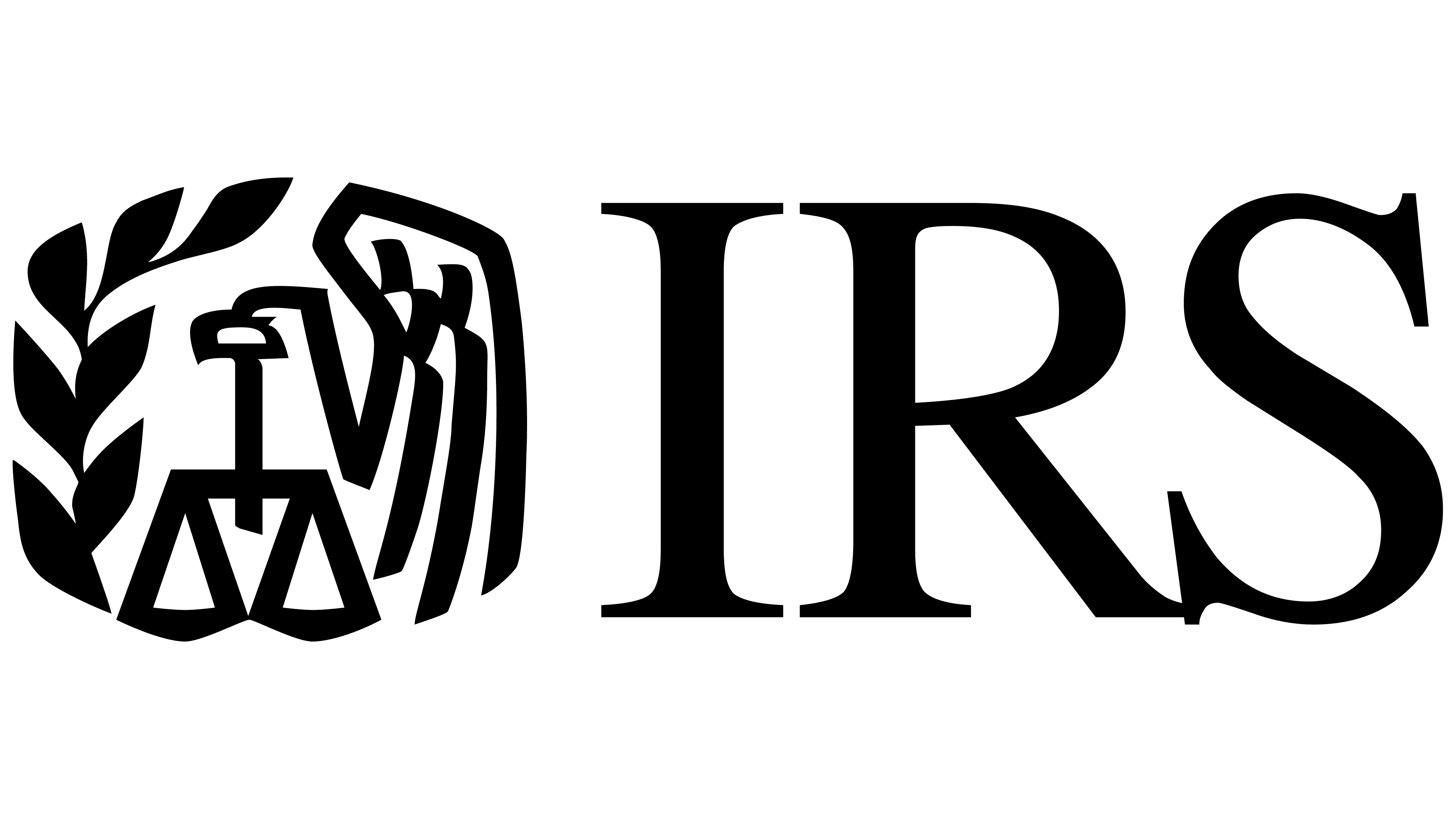






5-Star Service, Trusted & Loved by Hundreds
{{sectionName}}

{{sectionName}}

{{sectionName}}

{{sectionName}}

How the Process Works
Your Appraiser Search Ends Here
Your Appraiser Search Ends Here
.avif)

Nationwide Coverage – Appraisals Anywhere in the US

Get it done Onsite or Online

Any Asset, Covered

Defensible for Any Purpose
View all Locations
An antique jewelry appraisal is a meticulous professional assessment that determines the comprehensive value of jewelry pieces typically dating back at least 100 years. This specialized evaluation serves critical purposes ranging from insurance documentation to estate planning and understanding the intrinsic historical and monetary worth of cherished collections.
Certified appraisers conduct an in-depth examination that considers multiple sophisticated criteria. Provenance plays a pivotal role, with the piece's historical lineage and documented ownership directly influencing its market value. Experts carefully analyze the materials, examining gemstone characteristics such as carat weight, clarity, color, and cut, while simultaneously evaluating the specific metals and unique components used in the jewelry's construction.
Craftsmanship emerges as another crucial evaluation factor. Appraisers meticulously inspect construction techniques, signature marks, and design elements to determine the piece's artistic and technical quality. Renowned manufacturer or artisan signatures can significantly elevate a piece's monetary and collectible value.
The physical condition of the jewelry undergoes rigorous scrutiny, with even minor details potentially impacting its overall worth. Pristine pieces naturally command higher valuations compared to those showing extensive wear or requiring substantial restoration. Contemporary market trends and collector interests further modulate the potential value, reflecting the dynamic nature of antique jewelry valuation.
Professional appraisals culminate in a comprehensive written report that precisely documents the findings and assigns a fair market value. This authoritative document becomes an essential tool for insurance purposes, estate valuations, potential sales, and preserving the historical narrative of exceptional jewelry pieces.
The most credible appraisals are conducted by accredited professionals who adhere to stringent industry standards and national guidelines. Their expertise ensures a nuanced, accurate assessment that provides owners with genuine insight into their jewelry's historical significance and monetary value.
Antique jewelry appraisers are specialized professionals who assess the value of historically significant jewelry pieces, each bringing distinct expertise to the evaluation process. These experts differ in their focus, methodology, and depth of knowledge, catering to various aspects of antique jewelry valuation.
General jewelry appraisers provide comprehensive assessments, drawing on broad knowledge of materials, designs, and market trends. They evaluate pieces holistically, considering factors like condition, authenticity, and current market value across different periods and styles.
Gemological experts dive deep into the scientific analysis of jewelry components. Certified professionals meticulously examine gemstones, analyzing origin, cut, clarity, and weight. Their technical expertise allows for precise identification and valuation of the intricate stone elements in antique pieces.
Specialized antique appraisers offer a broader historical perspective, understanding the contextual significance beyond monetary worth. They bring deep knowledge of historical periods, design movements, and cultural influences that impact a piece's overall value and collector interest.
Certification specialists focus on creating detailed, authoritative documentation. Their work is critical for insurance purposes, legal transactions, and providing collectors with comprehensive reports that verify a piece's authenticity, characteristics, and appraised value.
Estate appraisers play a crucial role in inheritance and asset distribution. They navigate the complex landscape of generational jewelry, identifying potentially overlooked valuable pieces and ensuring fair assessment during estate settlements.
Each type of appraiser contributes unique insights, collectively forming a comprehensive ecosystem of expertise in understanding and valuing antique jewelry.
Antique jewelry appraisals provide critical insights for owners, offering far more than a simple monetary valuation. These professional assessments serve multiple essential purposes across personal, financial, and legal domains.
Insurance protection represents a primary motivation for obtaining an appraisal. Accurate documentation ensures that valuable pieces can be fully replaced or compensated in cases of loss, theft, or damage. Without a comprehensive professional evaluation, owners risk significant financial vulnerability.
Estate planning becomes considerably more straightforward with a precise appraisal. When distributing assets among heirs, a professional assessment eliminates ambiguity about an item's worth, facilitating fair and transparent inheritance processes. This documentation helps prevent potential family disputes and ensures clear intentions are honored.
Tax considerations also make appraisals invaluable. For significant donations or complex financial transactions, a qualified appraisal provides essential documentation that meets regulatory requirements. This becomes particularly crucial when claiming deductions or managing complex asset transfers.
Resale and market positioning benefit substantially from professional evaluations. Collectors and investors gain nuanced understanding of an item's current market value, enabling more informed decisions about potential sales, auctions, or long-term preservation strategies.
During legal proceedings such as divorces or inheritance disputes, a professional appraisal serves as an objective, authoritative reference point. The detailed documentation can provide crucial evidence, helping resolve complex asset-related conflicts with clarity and precision.
For serious collectors and cultural institutions, appraisals offer deeper insights beyond monetary value. They illuminate historical context, craftsmanship significance, and potential conservation needs, supporting more comprehensive collection management approaches.
Understanding an antique jewelry piece's true value extends far beyond simple curiosity—it represents responsible ownership, financial prudence, and historical appreciation.
Online antique jewelry appraisals have become increasingly sophisticated, offering a convenient and professional alternative to traditional in-person assessments. The digital appraisal process combines detailed documentation with advanced technological tools to provide comprehensive evaluations.
Typically, the online appraisal requires submitting high-resolution photographs and comprehensive documentation about the piece. Appraisers seek critical details including:
- Precise age and historical background
- Specific materials and construction techniques
- Unique identifying markings or engravings
- Historical documentation or previous assessments
Many professional appraisers now utilize video conferencing platforms to conduct interactive assessments. These live sessions allow for real-time examination, enabling appraisers to ask detailed questions and gain nuanced insights that static images might not reveal.
The remote appraisal method offers unparalleled flexibility for individuals with limited mobility or those located in areas without immediate access to specialized antique jewelry experts. Clients can receive professional-grade assessments from the comfort of their home while maintaining the highest standards of professional evaluation.
Digital appraisals serve multiple purposes, from establishing insurance valuations to understanding the historical and monetary significance of inherited or collected pieces. The process ensures comprehensive documentation that meets industry standards, providing clients with authoritative and detailed assessments of their antique jewelry.
What Makes Antique Jewelry So Valuable?
Antique jewelry holds a unique allure that transcends mere aesthetics, encapsulating history, artistry, and cultural significance. The value of these extraordinary pieces is derived from several key factors:
Historical Significance
Each piece of antique jewelry is a tangible connection to the past, representing:
- Fashion trends of specific historical periods
- Technological capabilities of the era
- Cultural practices and social norms
Items from distinct periods like Victorian, Edwardian, or Art Deco eras carry a rich heritage that dramatically enhances their historical value.
Rarity and Uniqueness
Antique jewelry stands out through its exceptional characteristics:
- Predominantly handcrafted designs
- Limited production quantities
- One-of-a-kind artistic expressions
This inherent scarcity makes each piece highly desirable among serious collectors, directly impacting market valuation.
Exceptional Craftsmanship
The artisanal quality of antique jewelry distinguishes it from modern mass-produced pieces through:
- Intricate hand engraving techniques
- Sophisticated enamel work
- Uniquely designed stone settings
- Meticulous attention to detail
These traditional techniques showcase extraordinary skill that modern manufacturing cannot replicate.
Condition and Provenance
Two critical factors that significantly influence an antique jewelry piece's value include:
- Preservation quality
- Original features and components
- Documented ownership history
Pieces with impeccable condition and verifiable historical background often command premium prices at auctions and among collectors.
Market Dynamics
The value of antique jewelry is also shaped by:
- Current fashion trends
- Collector interests
- Cyclical market demands
These fluctuating factors can transform previously overlooked pieces into highly sought-after treasures.
Ultimately, these elements combine to create a fascinating narrative within each piece of antique jewelry, transforming them from mere accessories into historical artifacts with profound cultural and artistic significance.
The Critical Role of Professional Appraisals in Preserving Heritage
Professional appraisals for antique jewelry play a critical role in preserving and understanding historic treasures. These comprehensive evaluations offer multiple essential benefits that extend far beyond simple monetary valuation.
Understanding Comprehensive Value
Professional appraisals provide a nuanced assessment of antique jewelry that considers:
- Historical significance
- Intricate craftsmanship
- Quality of materials
- Current market dynamics
Insurance and Financial Protection
A detailed professional appraisal is crucial for:
- Securing appropriate insurance coverage
- Documenting item value accurately
- Protecting against potential financial losses
- Ensuring fair compensation in case of damage or theft
Cultural and Historical Context
Expert appraisers bring invaluable insights by:
- Revealing the provenance of specific pieces
- Explaining historical design contexts
- Connecting jewelry to broader cultural narratives
- Transforming items from mere accessories to meaningful heirlooms
Preservation and Maintenance
Professional appraisals contribute to long-term jewelry conservation through:
- Specialized care recommendations
- Material-specific preservation techniques
- Guidance on preventing deterioration
- Strategies for maintaining aesthetic and structural integrity
Ultimately, professional antique jewelry appraisals represent a holistic approach to understanding, protecting, and appreciating historical treasures. These evaluations blend financial, historical, and emotional dimensions, ensuring that each piece's unique story and value are comprehensively recognized.
Decoding the Characteristics of Collectible Jewelry Pieces
Understanding the characteristics of collectible jewelry is crucial for accurate appraisal and valuation. Several nuanced factors contribute to a piece's overall worth and desirability.
Key Valuation Factors
Material Composition
- Precious metals play a critical role in determining value
- Primary materials include:
- Gold (14K, 18K, 24K variations)
- Silver
- Platinum
- Rare gemstones
- Metal purity and stone carat weight significantly impact overall worth
- Rarity and quality of materials are paramount in valuation
Design and Craftsmanship
- Design elements reflect specific historical periods and artistic movements
- Notable design eras include:
- Victorian
- Art Nouveau
- Art Deco
- Mid-Century Modern
- Artisan techniques elevate a piece's value:
- Hand engraving
- Repoussé
- Intricate metalwork
- Complex stone settings
- Unique design elements can dramatically increase market appeal
Provenance and Historical Significance
- Documented history can substantially increase a piece's value
- Factors that enhance provenance:
- Previous ownership by notable figures
- Connection to significant historical events
- Original documentation or certificates
- Maker's marks from renowned jewelers
- Collectors prize pieces with rich, verifiable narratives
Condition and Preservation
- Physical condition is a critical valuation factor
- Assessment considerations:
- Extent of wear and tear
- Quality of previous restoration
- Structural integrity
- Original components preservation
- Professional restoration can potentially increase value
- Comprehensive documentation of condition is essential
Comprehensively evaluating these characteristics provides a holistic understanding of a collectible jewelry piece's true value and significance.
Key Factors That Determine an Antique Jewelry's Worth
When assessing the value of antique jewelry, several critical factors come into play. Understanding these elements can help owners and collectors better comprehend the intrinsic worth of their cherished pieces.
Comprehensive Valuation Factors
1. Historical Context and Age
The era of origin dramatically influences an antique jewelry piece's value. Specific periods offer unique insights:
- Victorian era pieces reflect elegant, romantic design sensibilities
- Art Deco jewelry represents geometric precision and modernist aesthetics
- Rare historical periods can exponentially increase a piece's market value
2. Material Quality and Composition
Materials play a crucial role in determining intrinsic value:
- Precious metals: Gold, platinum, and silver with high purity ratings
- Gemstones: Evaluated by cut, clarity, color, and carat weight
- Rare or exceptional stones can significantly elevate a piece's worth
3. Artisan Craftsmanship
The quality of design and manufacturing technique are paramount:
- Handcrafted pieces with intricate detailing
- Unique design elements that showcase exceptional skill
- Innovative construction techniques from specific historical periods
4. Preservation and Condition
The physical state of the jewelry significantly impacts its value:
- Minimal wear and original condition are most desirable
- Professional restoration can potentially enhance or diminish value
- Authentic preservation techniques are critically evaluated
5. Provenance and Documentation
Historical documentation can dramatically increase a piece's collectible value:
- Verified ownership history
- Connection to notable historical figures
- Original certificates of authenticity
By comprehensively examining these factors, collectors and owners can gain a nuanced understanding of their antique jewelry's true market value.
Inside the Expert Appraisal Process: A Step-by-Step Guide
The appraisal process for antique jewelry is a meticulous procedure designed to determine the fair market value of items that hold both historical and aesthetic significance. Understanding this comprehensive process is crucial for collectors, sellers, and buyers to make informed decisions about their treasured pieces.
Initial Consultation: Setting the Foundation
The journey begins with a strategic consultation where the professional appraiser carefully gathers preliminary information about the jewelry piece. Key elements of this initial stage include:
- Collecting details about the item's origin and age
- Reviewing any accompanying historical documentation
- Listening to the client's insights about the piece's history
- Understanding the potential provenance and significance
Physical Examination: Detailed Inspection
A comprehensive physical examination follows, where the appraiser meticulously evaluates the antique jewelry through:
- Identifying maker's marks and signatures
- Recognizing distinctive stylistic features
- Assessing the overall condition of the piece
- Documenting any repairs or alterations
- Examining the structural integrity of the jewelry
Research and Analysis: Contextualizing Value
The most critical phase involves in-depth research and comparative analysis, which includes:
- Comparing the piece with similar historical items
- Consulting specialized databases and auction records
- Analyzing current market trends
- Evaluating rarity and demand factors
- Determining potential historical or artistic significance
Valuation Report: Comprehensive Documentation
After thorough analysis, the appraiser creates a detailed valuation report that encompasses:
- High-quality professional photographs
- Precise item descriptions
- Detailed material composition analysis
- Comprehensive condition assessment
- Carefully estimated market value
Client Presentation: Transparent Communication
The final step involves a comprehensive presentation where the appraiser:
- Explains the valuation methodology
- Provides context for the determined value
- Answers client questions
- Offers insights into potential future value
- Empowers the client with professional knowledge
A professional antique jewelry appraisal provides more than just a monetary assessment—it offers a deep understanding of the piece's historical significance, craftsmanship, and unique characteristics.
Debunking Myths About Antique Jewelry Valuation
When it comes to antique jewelry appraisal, misinformation and myths can often distort our understanding of true value. By dispelling these common misconceptions, collectors and enthusiasts can develop a more nuanced perspective on valuing these exquisite historical treasures.
Common Antique Jewelry Valuation Misconceptions
Myth 1: Age Automatically Equals High Value
While age contributes to an item's potential worth, it is not the exclusive determinant of value. Multiple critical factors significantly influence an antique jewelry piece's market price:
- Craftsmanship quality
- Material rarity
- Historical provenance
- Overall condition
For instance, a meticulously crafted late 20th-century piece by a renowned designer might command a higher price than an older piece with inferior artistic or technical execution.
Myth 2: All Antique Jewelry Commands Premium Prices
Contrary to popular belief, not all antique jewelry pieces are expensive. Valuation depends on several nuanced factors:
- Current market demand
- Piece's originality
- Historical significance
- Collector interest
Collectors are often more interested in unique pieces with compelling narratives, which can be surprisingly affordable.
Myth 3: Appraisals Represent Permanent Value
An appraisal is not a static, unchanging assessment. Jewelry valuations are dynamic and can fluctuate due to:
- Shifting market conditions
- Evolving collector preferences
- Fashion and design trends
- Restoration or preservation efforts
Regular professional reappraisals are recommended to maintain an accurate understanding of a piece's current market value.
Myth 4: Do-It-Yourself Appraisals Are Credible
While DIY approaches might seem appealing, professional jewelry appraisal requires specialized expertise across multiple disciplines:
- Art history
- Gemological analysis
- Market trend evaluation
- Authentication techniques
Professional appraisals are crucial for accurate valuation, particularly for insurance documentation and avoiding potential financial miscalculations.
By understanding these myths, collectors and enthusiasts can approach antique jewelry valuation with greater insight, realistic expectations, and a more sophisticated appreciation for these remarkable historical artifacts.
How to Select a Qualified Jewelry Appraiser
Selecting a qualified appraiser for your antique jewelry requires careful consideration and strategic evaluation. The right professional will provide an accurate, comprehensive assessment that reflects the true value of your cherished piece.
Key Criteria for Selecting a Qualified Jewelry Appraiser
1. Professional Credentials and Specialized Experience
- Seek appraisers with professional certifications from respected organizations like the American Society of Appraisers (ASA) or the International Society of Appraisers (ISA)
- Prioritize professionals with specific expertise in antique jewelry
- Verify their understanding of historical styles, materials, and market dynamics
2. Comprehensive Professional Background
- Request detailed references and past case studies
- Review client testimonials and online ratings
- Examine their track record with similar antique jewelry pieces
3. Communication and Transparency
- Ensure the appraiser can clearly explain their valuation methodology
- Schedule an initial consultation to assess their communication skills
- Verify their ability to address your specific questions and concerns
4. Rigorous Appraisal Methodology
- Confirm a comprehensive examination process
- Understand their approach to evaluating:
- Material composition
- Craftsmanship quality
- Historical significance
- Current market trends
- Discuss the detailed format of the final appraisal report
5. Professional Objectivity
- Select an independent appraiser who does not buy or sell jewelry
- Ensure a completely unbiased professional assessment
- Prioritize experts focused solely on accurate valuation
By meticulously evaluating these critical factors, you can confidently select a jewelry appraiser who will provide an expert, reliable assessment of your valuable antique piece.
Protecting Your Investment: Documentation and Preservation
When it comes to antique jewelry, the value transcends mere economics, encompassing artistry, history, and personal significance. Proper documentation and preservation not only protect your investment but also enhance its future value and appeal to collectors.
Documentation Essentials
Investing in an antique piece invariably entails crafting a comprehensive record of its history and condition. Key documentation components include:
- Provenance Tracking: Capture the jewelry's origin, previous ownership, and historical significance. Provenance adds crucial credibility and authenticity to your piece.
- Professional Appraisals: Conduct regular assessments from certified specialists to understand market value fluctuations and maintain an accurate valuation.
- Comprehensive Descriptions: Create detailed documentation of distinctive features, including:
- Design elements
- Material composition
- Unique craftsmanship details
- High-resolution photographs of hallmark stamps
- Close-up images of intricate settings
Strategic Preservation Methods
Antique jewelry requires meticulous care due to its inherent fragility. Implement these critical preservation techniques:
- Optimal Storage
- Store in cool, dry environments
- Avoid direct sunlight exposure
- Use acid-free tissue or soft cloth for wrapping
- Prevent scratching and tarnishing
- Gentle Cleaning Practices
- Avoid harsh chemicals
- Use soft, non-abrasive cloths
- Consult professional conservators for detailed cleaning
- Proactive Maintenance
- Conduct periodic comprehensive inspections
- Detect early signs of wear or damage
- Address potential issues immediately
- Schedule professional repairs when necessary
By prioritizing meticulous documentation and strategic preservation, you safeguard not just the monetary value of your antique jewelry, but also its historical integrity and aesthetic significance, ensuring these treasured pieces can be appreciated by future generations.
Maintaining the Integrity of Your Antique Jewelry Collection
Antique jewelry transcends mere ornamentation, representing profound historical narratives and artistic craftsmanship. Whether inherited through family lineages or discovered through serendipitous encounters, these precious pieces require meticulous care to preserve their intrinsic value and beauty.
Essential Preservation Strategies
Maintaining an antique jewelry collection demands a comprehensive approach that balances preservation, documentation, and professional expertise.
Regular Professional Assessment
- Schedule routine evaluations with specialized gemologists
- Identify potential restoration requirements
- Obtain updated market valuations
- Assess structural integrity of settings and materials
Optimal Storage Techniques
- Select cool, dry storage environments
- Use soft-lined protective boxes or pouches
- Minimize exposure to direct sunlight
- Prevent potential scratching or environmental damage
Cleaning Methodology
- Employ gentle, non-invasive cleaning techniques
- Use soft cloths and mild soap solutions
- Avoid harsh chemical treatments
- Consult experts for complex or delicate pieces
Environmental Considerations
- Maintain consistent temperature settings
- Protect pieces from extreme thermal variations
- Pay special attention to organic materials like pearls
- Prevent structural stress on delicate components
Documentation and Protection
- Create comprehensive jewelry inventories
- Photograph each piece with detailed descriptions
- Secure appropriate insurance coverage
- Maintain organized records for provenance tracking
By implementing these strategic preservation practices, collectors can safeguard their antique jewelry, transforming cherished pieces into enduring family treasures that bridge generations and preserve precious historical legacies.
Current Market Dynamics in Antique Jewelry
The antique jewelry market is a complex and evolving landscape driven by multiple interconnected factors that shape value, demand, and collector interest.
Key Market Dynamics Influencing Antique Jewelry
Consumer Trends and Market Perception
- Emerging interest from younger generations seeking unique, vintage fashion statements
- Social media platforms like Instagram and Pinterest amplifying visual appeal and accessibility
- Growing appreciation for distinctive, one-of-a-kind pieces with historical narrative
Valuation Determinants
- Historical Significance
- Pieces associated with cultural events or notable figures command higher prices
- Historical context adds intrinsic value beyond material composition
- Scarcity and Rarity
- Diminishing supply increases potential market value
- Specific styles and rare materials become increasingly desirable
- Preservation of high-quality pieces becomes more critical
Market Influencers and Economic Factors
- Auction houses and estate sales significantly impact market perception
- Economic conditions influence buyer behavior and investment strategies
- Increased emphasis on authenticity and professional certification
Critical Considerations for Collectors and Investors
Understanding these dynamic market elements enables more informed decision-making, transforming antique jewelry appreciation from mere aesthetic interest to strategic investment potential.
Legal Insights for Antique Jewelry Owners
Understanding the legal aspects surrounding antique jewelry ownership is essential for collectors, heirs, and enthusiasts. These intricate pieces, typically defined as items over 100 years old, often involve complex legal considerations that extend beyond simple ownership.
Ownership Rights: Navigating Inheritance and Acquisition
- Carefully verify inheritance documentation, including wills and trust declarations
- Check for potential liens or outstanding claims against inherited pieces
- Maintain comprehensive records of how the jewelry was acquired
- Ensure clear transfer of ownership through proper legal channels
Provenance: Establishing Authenticity and Value
Provenance represents the critical historical documentation of an antique jewelry piece's origin and ownership trajectory. Key considerations include:
- Obtaining professional documentation from recognized experts
- Tracking the complete ownership history
- Gathering supporting evidence of authenticity
- Understanding how provenance impacts the piece's market value
Insurance and Protection Strategies
Standard insurance policies often fall short when protecting valuable antique jewelry. Recommended steps include:
- Securing a professional, detailed appraisal
- Obtaining specialized jewelry insurance
- Updating valuations periodically
- Documenting the piece's condition and unique characteristics
Potential Legal Challenges
Antique jewelry ownership can present several legal complexities:
- Ownership disputes between family members
- Challenges related to inheritance
- Potential claims of misrepresentation
- International legal considerations for historical pieces
Protecting Your Investment
To safeguard your antique jewelry and minimize potential legal risks:
- Consult with legal professionals specializing in property or estate law
- Maintain comprehensive documentation
- Obtain professional appraisals from recognized experts
- Understand the historical and legal context of your pieces
Navigating the legal landscape of antique jewelry requires diligence, expertise, and a comprehensive approach. By understanding these critical considerations, collectors can protect their investments and appreciate the rich history behind these remarkable pieces.
Your Burning Questions About Antique Jewelry Appraisals, Answered
Antique jewelry appraisals are complex processes that raise numerous questions for collectors, sellers, and enthusiasts. Understanding the nuances of evaluation can help ensure your treasured pieces are accurately assessed and valued.
What Exactly is an Antique Jewelry Appraisal?
An antique jewelry appraisal is a professional, comprehensive evaluation that determines the fair market value of jewelry typically over 100 years old. This meticulous process involves multiple critical assessments:
- Detailed examination of item condition
- Analysis of craftsmanship and design
- Evaluation of rarity and historical significance
- Consideration of current market trends
Purpose and Importance of Professional Appraisals
Professional appraisals serve multiple crucial purposes:
- Sales Preparation: Establishes a competitive and fair market price
- Insurance Documentation: Provides comprehensive coverage protection
- Authentication: Confirms piece's legitimacy and historical context
- Collection Management: Helps understand the true value of inherited or collected pieces
Critical Value Determinants
Multiple sophisticated factors influence an antique jewelry piece's valuation:
Material Quality
- Precious metal composition
- Gemstone type and grade
- Purity and rarity of materials
Craftsmanship Considerations
- Artistic design complexity
- Manufacturing technique
- Historical manufacturing period
Additional Valuation Factors
- Overall physical condition
- Documented provenance
- Current collector market demand
Selecting a Qualified Appraiser
When seeking an antique jewelry appraisal, prioritize professionals with:
- Certified gemology credentials
- Membership in professional appraisal organizations
- Specialized expertise in historical jewelry
- Demonstrated knowledge of market trends
By understanding these critical aspects, you'll be empowered to navigate the intricate world of antique jewelry valuation with confidence and insight.
BEST-IN-CLASS APPRAISERS, CREDENTIALED BY:






.svg)











